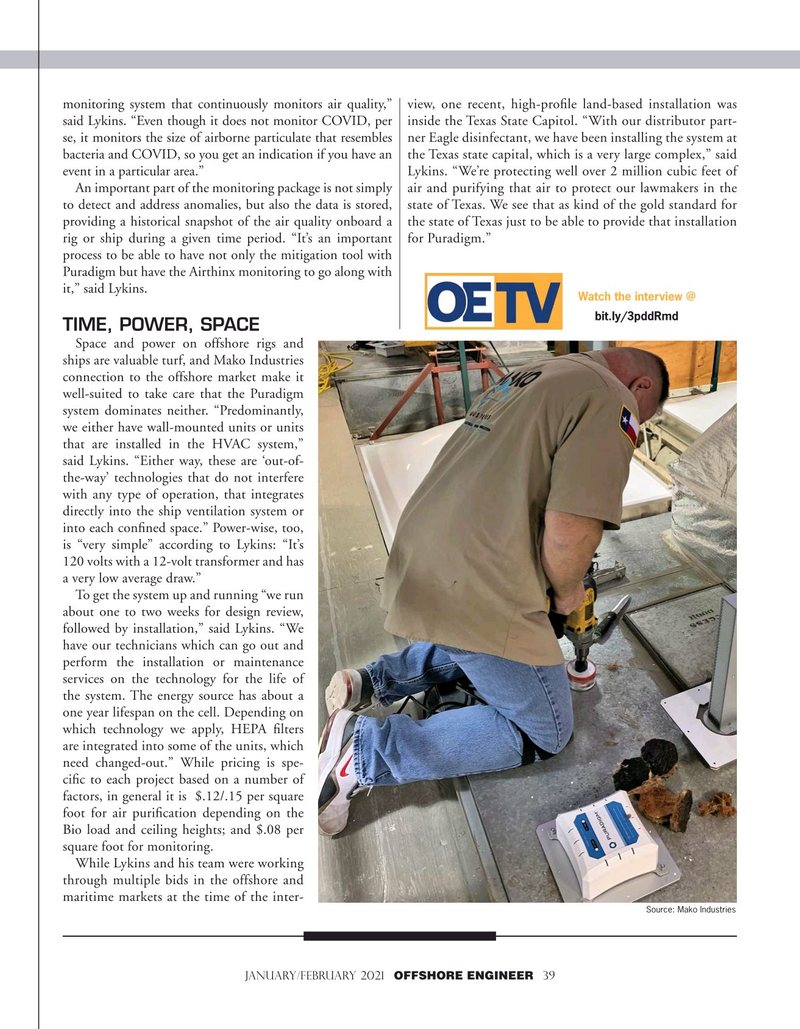
Page 39: of Offshore Engineer Magazine (Jan/Feb 2021)
Floating Production Outlook
Read this page in Pdf, Flash or Html5 edition of Jan/Feb 2021 Offshore Engineer Magazine
monitoring system that continuously monitors air quality,” view, one recent, high-pro?le land-based installation was said Lykins. “Even though it does not monitor COVID, per inside the Texas State Capitol. “With our distributor part- se, it monitors the size of airborne particulate that resembles ner Eagle disinfectant, we have been installing the system at bacteria and COVID, so you get an indication if you have an the Texas state capital, which is a very large complex,” said event in a particular area.” Lykins. “We’re protecting well over 2 million cubic feet of
An important part of the monitoring package is not simply air and purifying that air to protect our lawmakers in the to detect and address anomalies, but also the data is stored, state of Texas. We see that as kind of the gold standard for providing a historical snapshot of the air quality onboard a the state of Texas just to be able to provide that installation rig or ship during a given time period. “It’s an important for Puradigm.” process to be able to have not only the mitigation tool with
Puradigm but have the Airthinx monitoring to go along with it,” said Lykins.
Watch the interview @ bit.ly/3pddRmd
TIME, POWER, SPACE
Space and power on offshore rigs and ships are valuable turf, and Mako Industries connection to the offshore market make it well-suited to take care that the Puradigm system dominates neither. “Predominantly, we either have wall-mounted units or units that are installed in the HVAC system,” said Lykins. “Either way, these are ‘out-of- the-way’ technologies that do not interfere with any type of operation, that integrates directly into the ship ventilation system or into each con?ned space.” Power-wise, too, is “very simple” according to Lykins: “It’s 120 volts with a 12-volt transformer and has a very low average draw.”
To get the system up and running “we run about one to two weeks for design review, followed by installation,” said Lykins. “We have our technicians which can go out and perform the installation or maintenance services on the technology for the life of the system. The energy source has about a one year lifespan on the cell. Depending on which technology we apply, HEPA ?lters are integrated into some of the units, which need changed-out.” While pricing is spe- ci?c to each project based on a number of factors, in general it is $.12/.15 per square foot for air puri?cation depending on the
Bio load and ceiling heights; and $.08 per square foot for monitoring.
While Lykins and his team were working through multiple bids in the offshore and maritime markets at the time of the inter-
Source: Mako Industries january/february 2021 OFFSHORE ENGINEER 39

 38
38

 40
40